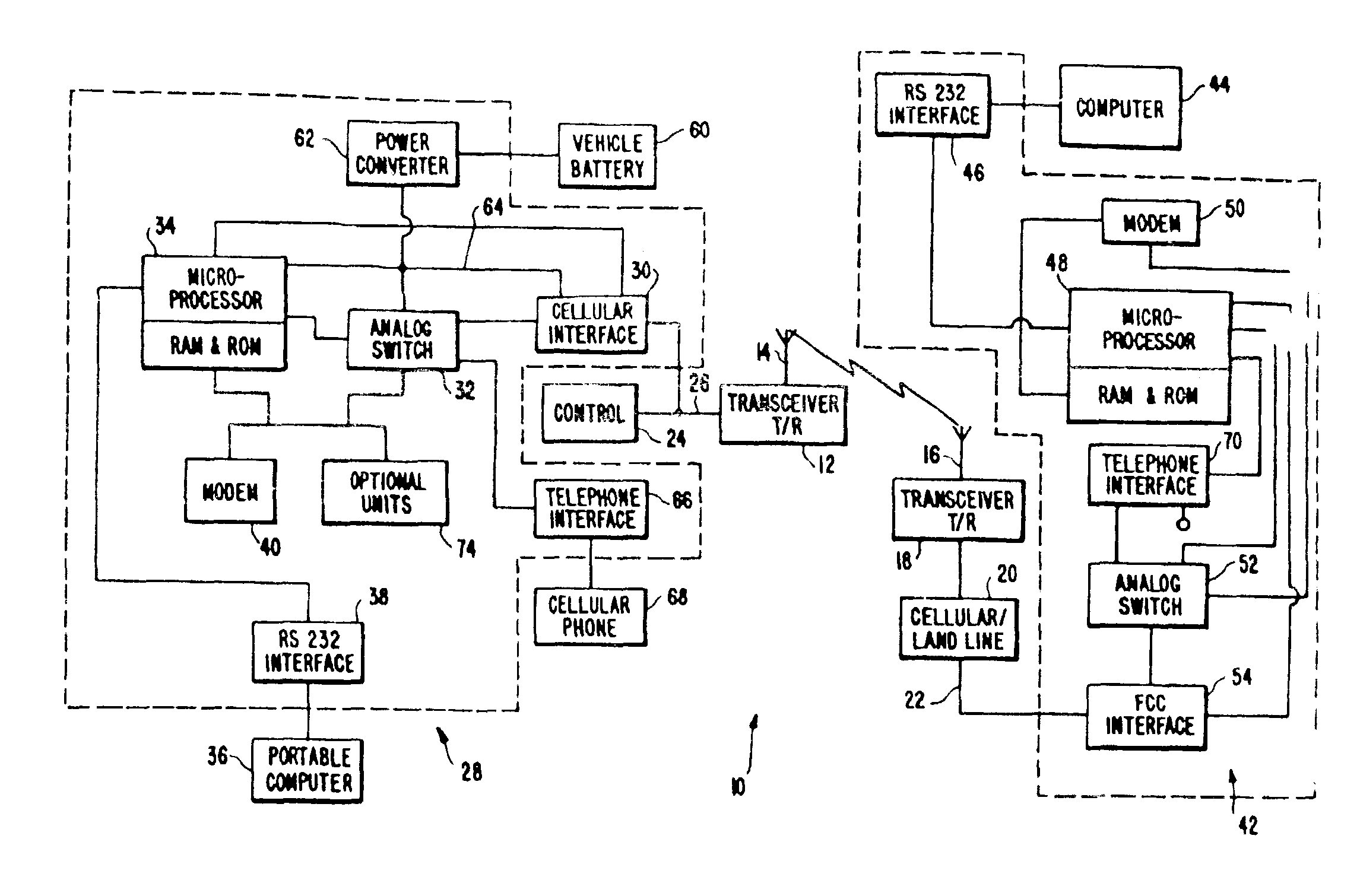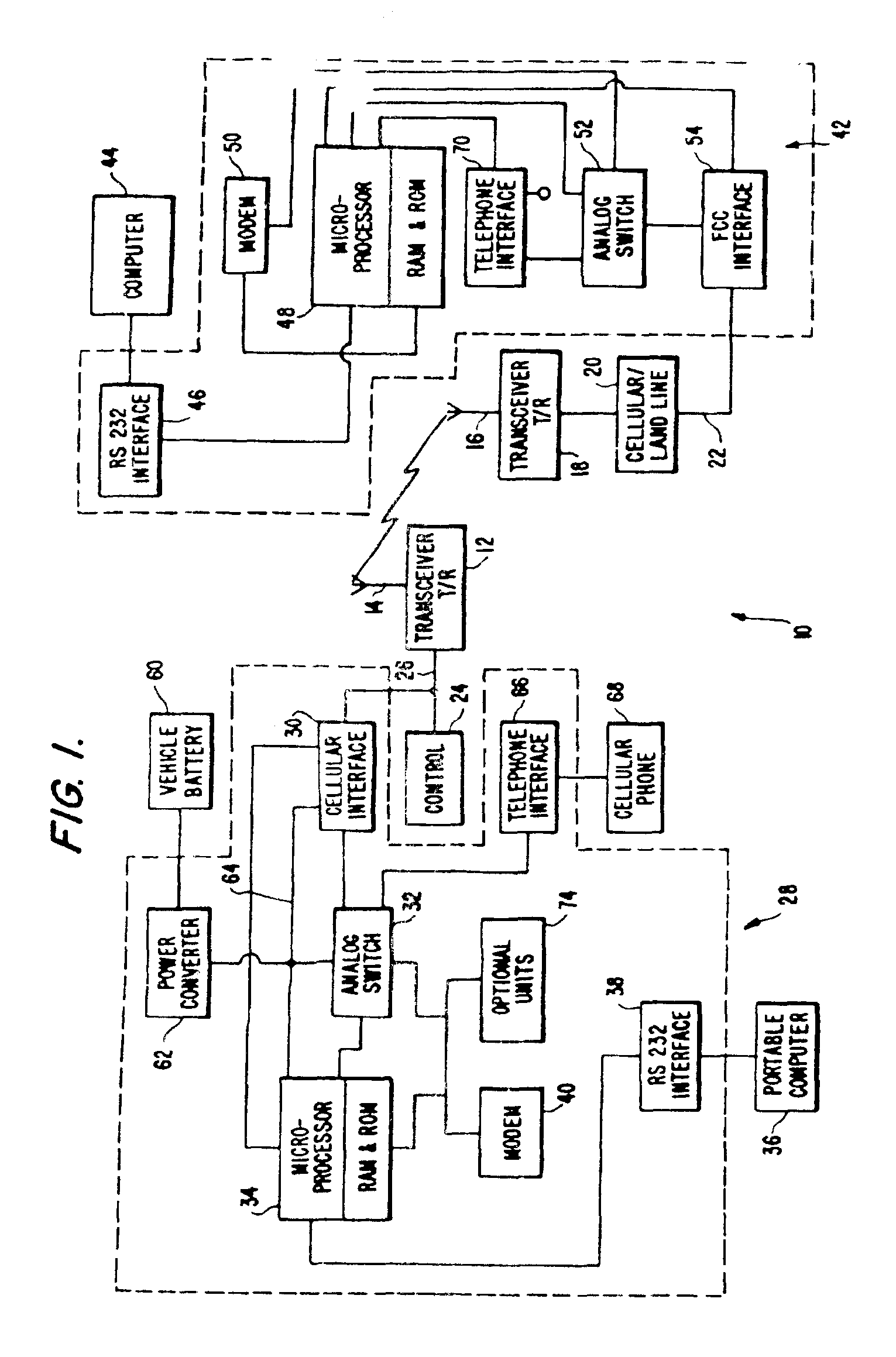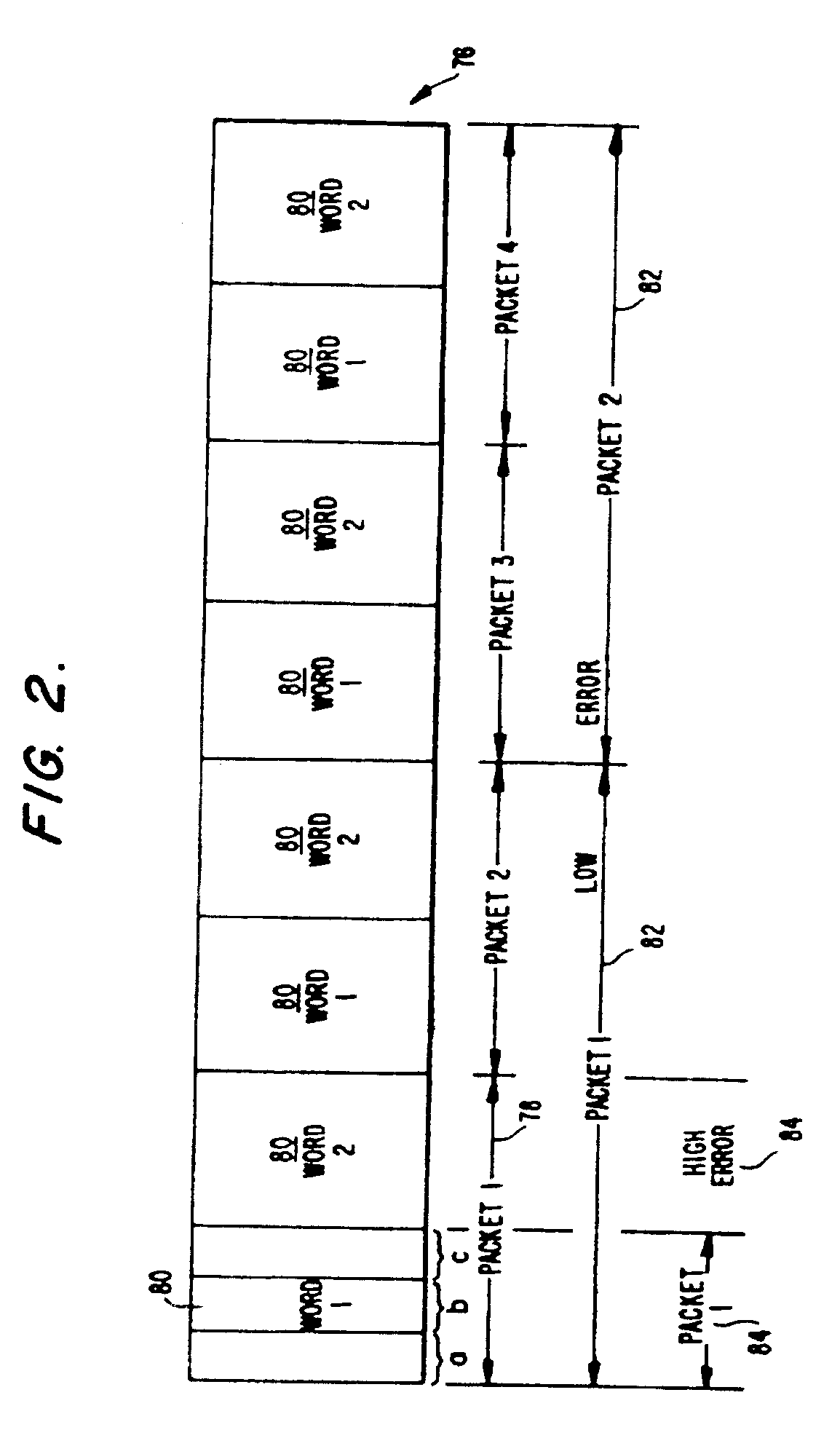Cellular telephone data communication system and method
a communication system and cellular telephone technology, applied in the field of telephone data communication systems, can solve the problems of significant problems, carrier loss, and inability to effectively provide data transmission over conventional cellular telephone equipment by modem, and achieve the effect of preventing modem disconn
- Summary
- Abstract
- Description
- Claims
- Application Information
AI Technical Summary
Benefits of technology
Problems solved by technology
Method used
Image
Examples
Embodiment Construction
[0027]The system for transmitting data over a cellular telephone network of the present invention is indicated generally at 10 in FIG. 1. A vehicle mounted mobile cellular telephone system conventionally includes a transceiver 12 which transmits or receives voice signals in the radio frequency range by means of an antenna 14. Voice signals transmitted by the antenna 14 are received by an antenna 16 connected to a transceiver 18 located in a specific cell area of the cellular telephone network. The transceiver 18 is connected to cellular land line equipment 20 which is operative to transmit the received signal over conventional telephone lines 22. Voice signals from the telephone lines 22 may also be transmitted by the transceiver 18 and the antenna 16 back to the antenna 14 to be provided by the transceiver 12 to a conventional mobile cellular telephone unit. The transceiver 12 is controlled by a cellular telephone system control unit 24 which is connected to the transceiver by mean...
PUM
 Login to View More
Login to View More Abstract
Description
Claims
Application Information
 Login to View More
Login to View More - Generate Ideas
- Intellectual Property
- Life Sciences
- Materials
- Tech Scout
- Unparalleled Data Quality
- Higher Quality Content
- 60% Fewer Hallucinations
Browse by: Latest US Patents, China's latest patents, Technical Efficacy Thesaurus, Application Domain, Technology Topic, Popular Technical Reports.
© 2025 PatSnap. All rights reserved.Legal|Privacy policy|Modern Slavery Act Transparency Statement|Sitemap|About US| Contact US: help@patsnap.com



